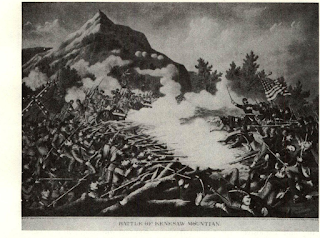A few of the Regular Army medical officers had
The most valuable instruction was a series of pocket
ant surgeons, approximately 4,000 of them throughout
To the problems of repair and treatment after gunshot wounds, a whole new generation of sawbones gave
“The use of powerful styptics,” states a contemporary account, “has been recommended by some surgeons, and soldiers were advised to carry a small
In head wounds or places where a tourniquet could
More equipment than a roller bandage and torn
The round musket ball, even of large diameter—.69
The most valuable instruction was a series of pocket
ant surgeons, approximately 4,000 of them throughout
To the problems of repair and treatment after gunshot wounds, a whole new generation of sawbones gave
“The use of powerful styptics,” states a contemporary account, “has been recommended by some surgeons, and soldiers were advised to carry a small
In head wounds or places where a tourniquet could
More equipment than a roller bandage and torn
The round musket ball, even of large diameter—.69

Comments
Post a Comment